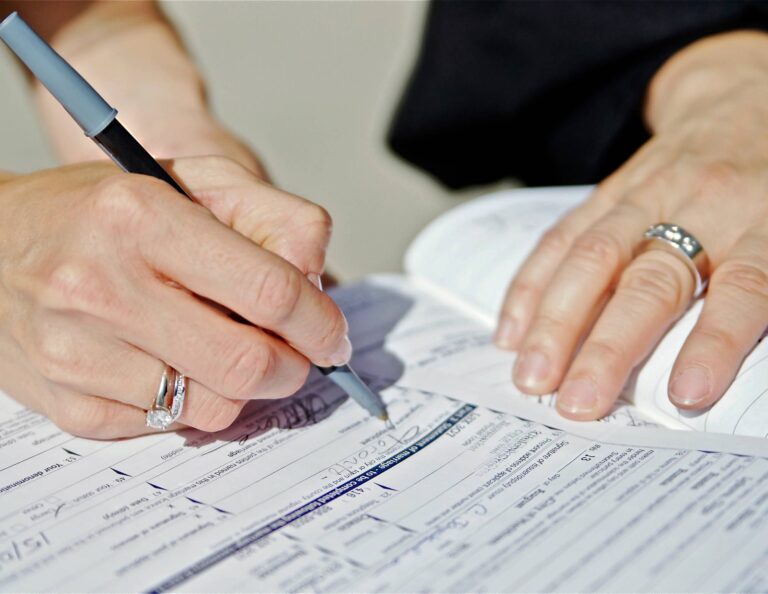Navigating the messaging and timing of a payment reminder email can be intimidating. Here are some tips and templates to help you get paid and take work off your plate.

Payment reminder emails are tricky.
You have to maintain a balance of being polite enough to maintain a great relationship with your client, but stern enough that your client feels a sense of urgency to pay you.
Whether your client is a week late or a month late on payments, we’re here to help you walk that tightrope.
In this article, we’ll start with some tips for politely asking a client for payment, and then we’ll provide email templates for every stage of the payment reminder process that are proven to get you paid faster.
Try automated payment reminders
Plug your payment reminder email into HoneyBook for automated reminders that get you paid on time.
Let’s start with some tips!
Jump to:
- Use a clear subject line
- Refer to the invoice
- Start with a polite introduction
- Make the payment terms clear
- Include details on how you pay
- Confirm receipt (optional)
- Include consequences of late payment (optional)
- Keep the copy short and friendly
- Send at the right time
- Take advantage of automated emails
- When should you send a payment reminder email?
- 3 Examples of payment reminder emails
1. Use a clear subject line
Make your client’s life easier by giving them all the information they need directly from your email’s subject line.
When writing your email subject line:
- Use clear keywords like “Payment Reminder:”
- Include the invoice number
- Include the payment date
Here’s what that looks like in action:
Subject: Payment Reminder: Invoice 1/3 – Due October 1
2. Refer to the invoice
Don’t make your client dig through their email history to find the invoice you’re reminding them to pay.
Re-attach the invoice to your email, or provide a link if you’re using an online invoice.
If you’re prone to forgetting to add attachments, attach the invoice before you type a single word, or use a system like HoneyBook that attaches the invoice file in each payment reminder email automatically!
3. Start with a polite introduction
You don’t want to come off as too cold. Start your email with a polite and personal introduction. This ensures that you’re sending a friendly reminder for payment.
That can be as simple as greeting the client by name and then including a single line wishing them well.
For example:
Hi {Client Name},
I hope you’re well!
It’s okay to use exclamation marks but try to use them sparingly.
4. Make the payment terms clear
The most important part of your email is to remind the client how much is due, and when the payment is (or was) due.
Don’t be vague: include the exact due date of the invoice and avoid making confusing statements like “due on receipt.” If you have to send multiple reminders, continue to update the timeline, whether it’s a day overdue, a week, or more. Doing so will help you document the late payment in case you need to refer back to your reminders.
For example:
Friendly reminder that Invoice #1, totaling $1,000, is 3 days overdue from its original October 1 due date.
5. Include details on how to pay
While you may include payment details on the invoice itself, you should also include a clear call to action on how to pay in the email body.
For example:
Payment can be made via credit card, cash, or check.
Bonus tip: By using an online payment software like HoneyBook, you can give your clients a convenient link to pay directly from your payment reminder email.
6. Confirm receipt (optional)
If this isn’t your first reminder, you may want to use this opportunity to check with your client that they have actually received your invoice.
Not only does it give you peace of mind, but it’s also a convenient way to shift the conversation to something other than “please pay me.”
For example:
Please confirm receipt of this invoice so we can make sure we have your correct contact information.
If you’ve already received a reply to a previous email from the client, you could modify this section to ask your client when you should expect to receive payment.
7. Include consequences of late payment (optional)
If the payment is late, you may have to remind your client about your late payment policy. But unless the payment is really late, try not to sound too threatening.
For example:
As a reminder of our payment terms, a late fee of 5% will be applied for every week the overdue payment is not paid.
Other policies might include canceling the contract. You might not need to repeat your full late-payment policy, but be sure to remind your clients about any milesones that are coming up, such as halting services at a certain date or applying another late fee.
Just keep in mind that you need to establish late payment terms at the start of your working relationship—ideally in an online contract. Otherwise, you can’t legally hold your clients to these policies.
8. Keep the copy short and friendly
Payment reminder emails should stay friendly, professional, short, and informative.
Before sending your email, review it to ensure everything you say comes off as polite. Avoid using pronouns like “you”, as they can end up sounding accusatory in nature. Instead, use passive, positively framed language.
For example:
Don’t say: You have to pay me by October 1.
Say: Payment is due by October 1.
And don’t forget a nice sign-off in your email. Unless you’re getting ready to cancel a contract, you want to give your clients the benefit of the doubt and simply follow your late-payment policy. Up until they aren’t clients anymore, you still want to maintain a positive relationship.
9. Send at the right time
Try to send your payment reminder email at a time of day when your client is most likely to read it and action it.
For example, if your client works typical 9-to-5 office hours, don’t send your invoice reminders at 5 pm on a Friday. Send your emails first thing in the morning on Monday or Tuesday.
10. Take advantage of automated emails
Keeping track of which payments are late and how late can take up too much of your time. If you’re manually sending reminder emails, it’ll become tedious.
Instead, use automated email reminders that you can set up for each client. Just because they’re automated doesn’t mean that they can’t be personalized. When you set up your email templates, you can still incorporate your friendly, natural tone.
As soon as someone books with you, just set up an automated workflow with reminders leading up to their payment and after their due dates (if they forget to pay).
With a system like HoneyBook, you can include convenient dynamic fields like the client’s first name so each email is still personalized for them.
Not only do you increase your chances of getting paid on time, but you can also spend less time writing emails.
When should you send payment reminder emails?
How many payment reminder emails should you send?
The exact number of emails and when you send them will vary based on your business and invoicing schedule, but it’s best to send reminder emails before the payment is due, on the due date, and after the payment due date (if necessary).
Here’s an example payment reminder email cadence:
- Advanced reminder: sent a week or a few days before the due date
- Due date email: sent on the due date
- First late payment reminder: sent a week after the payment due date
- Second late payment reminder: sent two weeks after the payment due date
- Third late payment reminder: sent when the invoice is a month overdue
By keeping a predictable and regular payment reminder cadence, you’ll establish the professionalism and value of your business—showing your client that you take getting paid seriously.
3 examples of payment reminder emails
Here are some useful payment reminder email templates that are proven to get you paid faster.
Payment reminder email in advance
Sending this email a week in advance is a great signal to your client that you expect to be paid on time. For your first payment reminder email, keep it polite, short, and informative.
Here’s how to write a great one-week reminder email:
Copy/Paste Template:
One-Week Reminder Email
Hi Maria,
I hope you’re doing well! This is a friendly reminder that invoice #1, totalling $1,000, is due for payment on October 1—one week from today.
Please feel free to contact me if you have any questions about the invoice or payment details.
Thank you,
Rick Roberts
In this email, you don’t need to be too aggressive. In this case, we didn’t attach the invoice or include payment details, as we assumed the client has this information and is prepared to pay on time.
Due date payment reminder email
It’s also advisable to send an email on the date the invoice is due. In this case, you still want to keep it friendly, but you should include more payment details.
Here’s a great example of a payment reminder email on the payment due date:
Copy/Paste Template:
Due Date Reminder
Subject: Payment Reminder: Invoice #01 – Due Today
Hi Maria,
Good morning! I just wanted to remind you that invoice #1, totaling $1,000, is due for payment today (October 1).
I’ve attached a copy of the invoice for your convenience. Payment can be made by direct deposit, bank transfer, or check.
Best wishes,
Rick Roberts
Because the client still hasn’t paid by the due date, you want to make it as easy as possible for them to pay you by providing the total balance, how to pay you, and the original invoice. But you can still keep the payment reminder message light and friendly, because they still have the chance to pay you today.
Late payment reminder email
Once the client has reached a week without paying you, you have the green light to shift to a firmer tone.
Here’s how to write a late payment reminder email:
Copy/Paste Template:
One-Week Reminder
Subject: Payment Reminder: Invoice #01 – One Week Overdue
Hi Maria,
I hope all is well. My records indicate that I have yet to receive payment for invoice #1, totalling $1,000. The invoice was due on October 1st, making it a week overdue.
I’ve reattached the invoice for your convenience. Payment can be made by direct deposit, bank transfer, or check.
Best wishes,
Rick Roberts
Once again, this past-due email example gives the client everything they need to know to be able to pay you. Note that it’s worded as “I have yet to receive payment,” neutralizing the issue of the late payment and not placing any blame on your client.
Get paid faster with the right tools
Getting paid on time isn’t just about successfully reminding your clients. It’s about setting the right terms in your contracts, offering an easy way to pay, and tracking payments seamlessly. You can do it on your own, or you can save time with a clientflow management platform.
With a system like HoneyBook, you can create the best collateral for selling your services, send online invoices and contracts, and get paid through the click of a button.
Manage payments, schedule reminders, and much more
Manage your entire process of selling and delivering services with HoneyBook’s clientflow management platform.




